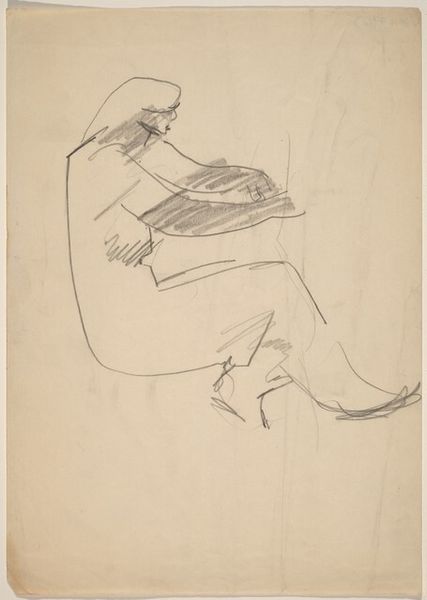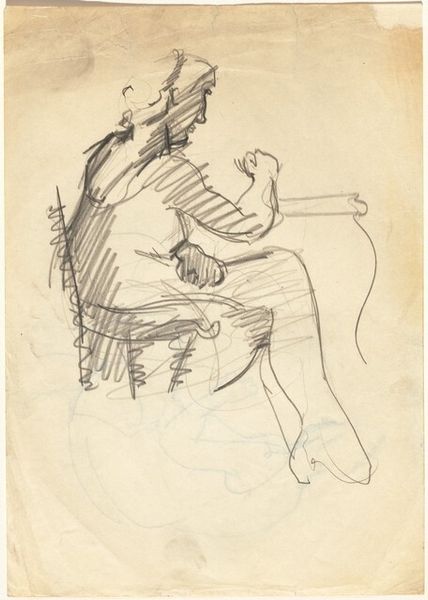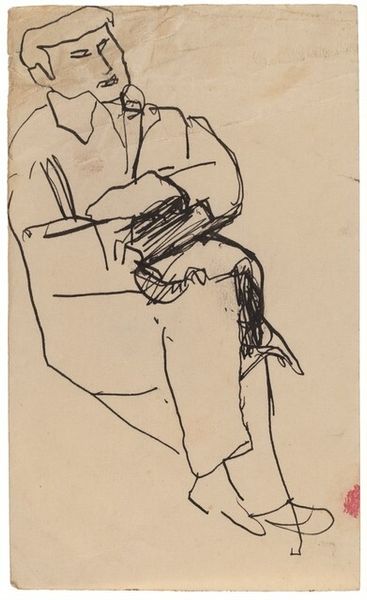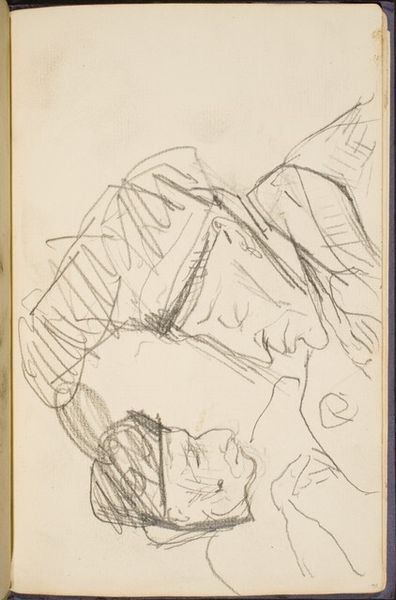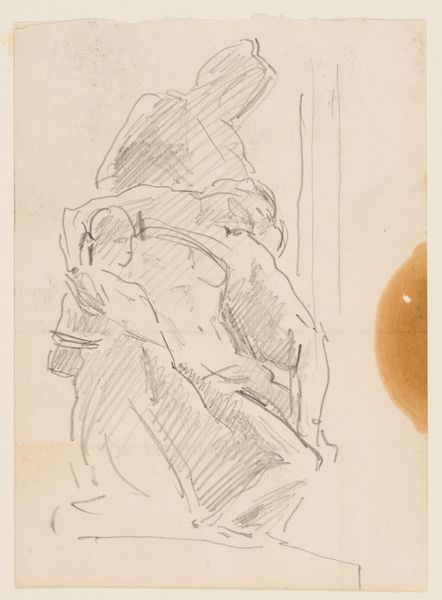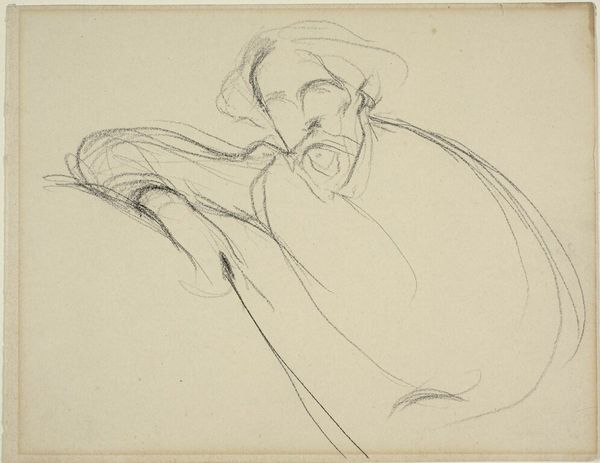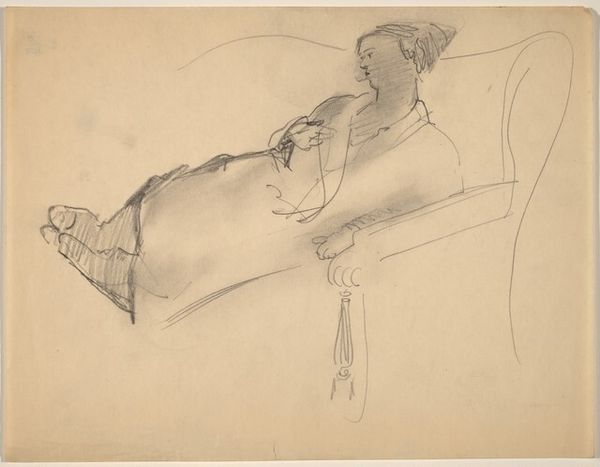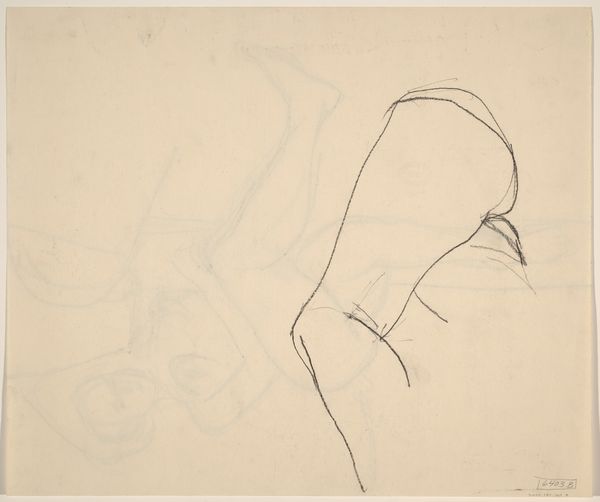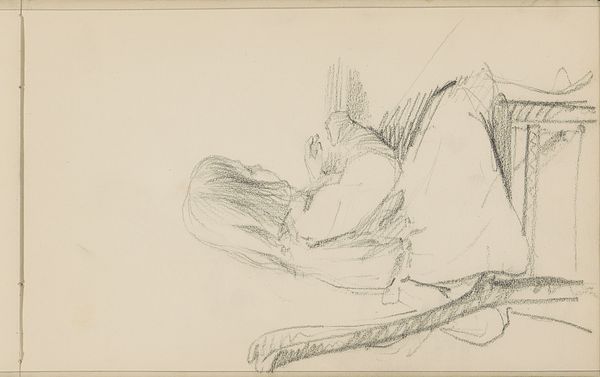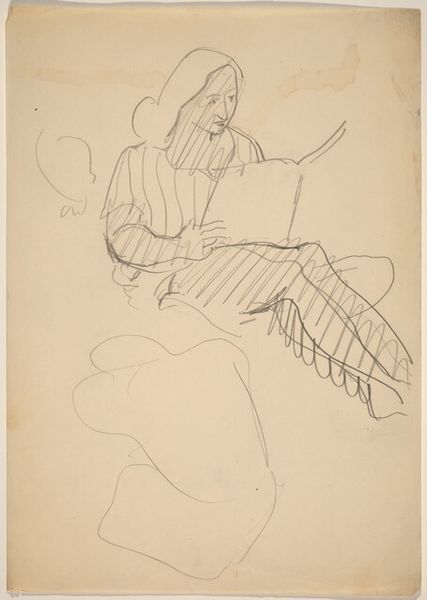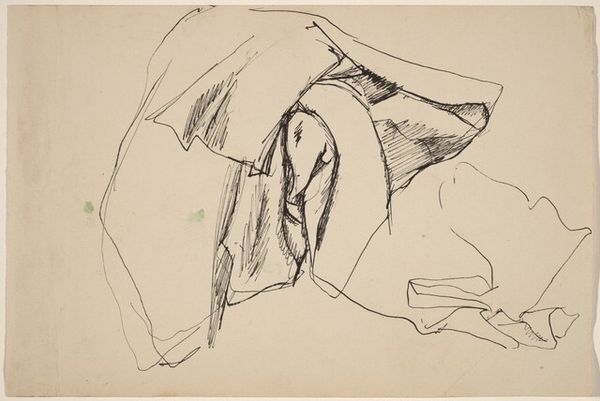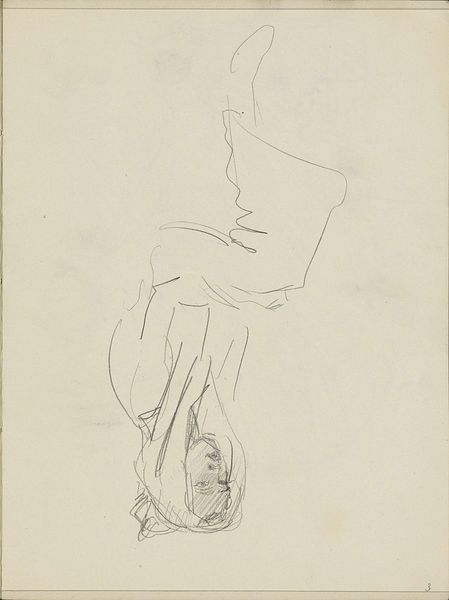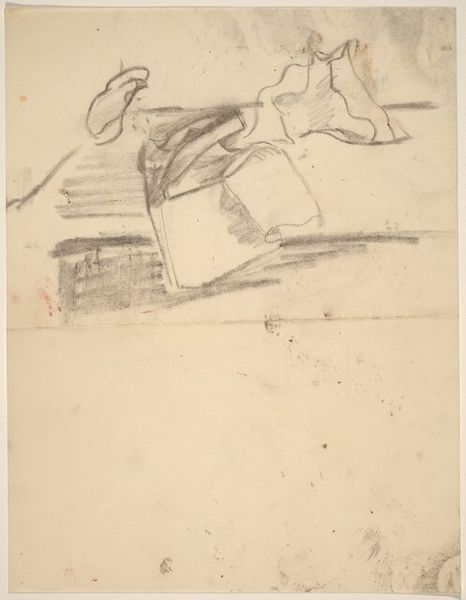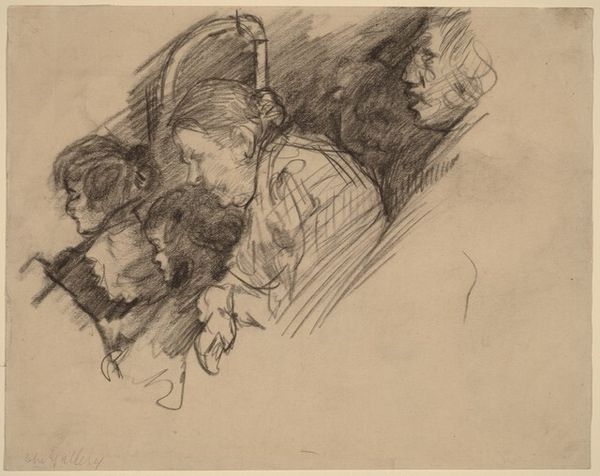
drawing, pencil, graphite
#
portrait
#
drawing
#
figuration
#
pencil
#
graphite
#
genre-painting
Dimensions: overall: 21.6 x 30.4 cm (8 1/2 x 11 15/16 in.)
Copyright: National Gallery of Art: CC0 1.0
Curator: Let’s discuss this sketch titled “Seated Figure Reading.” It appears to be a pencil or graphite drawing, featuring a figure engaged in reading. Editor: It’s surprisingly dynamic for what I’d expect from a simple portrait. The loose linework creates a sense of movement, like the figure is shifting slightly in their seat as they read. There’s an intimate feeling. Curator: Absolutely. The composition itself is rather intriguing. The figure occupies a large portion of the picture plane, drawing our immediate attention. But then, note the economical use of line to define form. Observe how the repeated gestures build a complex structural form and internal rhythm, creating depth. The reading material is depicted frontally as if presented for inspection. Editor: It almost has the feel of a political cartoon or a statement piece, like a commentary on literacy or perhaps a particular reader demographic. Who do you think this figure is and what do you think they’re reading? The subject's engagement is also notable given debates around who has access to reading materials and freedom of information in the context of art and social movements. Curator: We can only speculate about their reading material or their identity. But if we shift focus from the “what” to the “how,” the emphasis lands firmly on the artistic process. The visible construction of the image—the layering of lines, the visible erasures—all highlight Rothko’s focus on capturing a fleeting moment. We must concede the drawing is ultimately an object that exposes artifice in order to create an impression, that is what Rothko seemed preoccupied with at this time. Editor: Yet, there's an inescapable power in the representation of the reader, particularly considering historical restrictions on literacy. Doesn’t art of figuration reflect not only aesthetic goals, but also, cultural commentary of gender, class, or liberation from political and social constructs. The subject of someone immersed in learning immediately evokes notions of personal and potentially societal transformation. What the person chooses to read determines their relationship to civic participation. Curator: True, but it does return us to the problem that is the very absence of contextual cues that make your interpretations entirely presumptive, whereas close inspection provides demonstrable claims and the recognition of art production. Editor: But that very “absence” is significant. It pushes us to question: what reading is this and where? What does this open ended depiction mean to contemporary debates surrounding educational and literary freedoms? It beckons viewers to insert themselves into the narrative. Curator: Indeed, “Seated Figure Reading” seems deceptively simple. In the end, both formal inspection and context contribute meaningfully to the interpretive experience. Editor: Agreed, whether appreciating it as a demonstration in aesthetic or engagement, Rothko invites consideration.
Comments
No comments
Be the first to comment and join the conversation on the ultimate creative platform.
